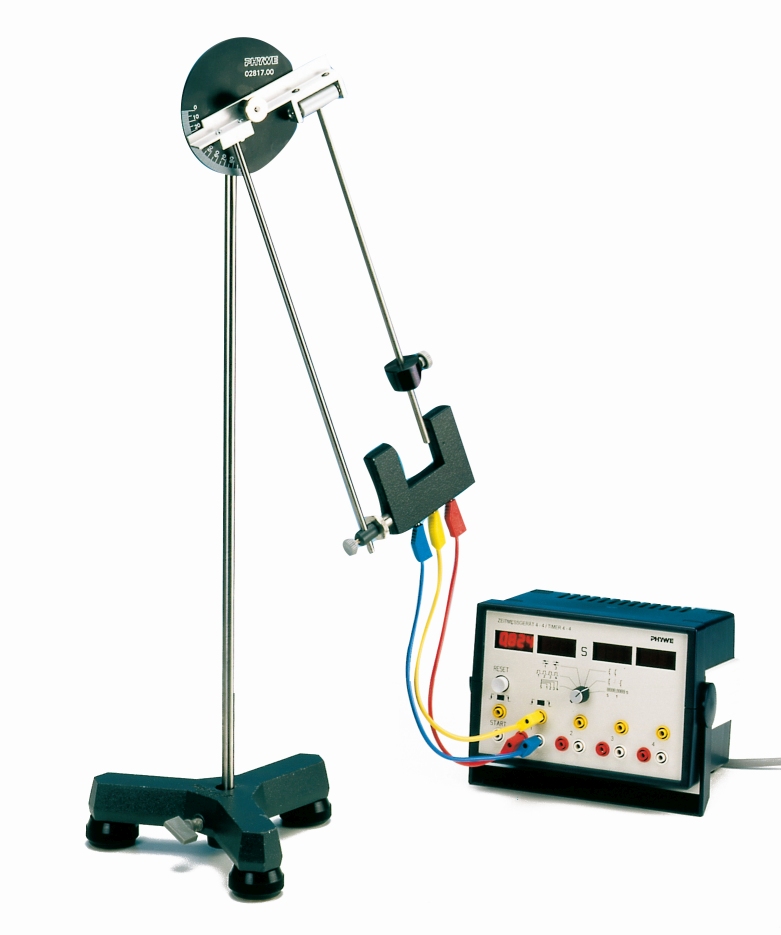Principle
Investigate the oscillation behaviour of a pendulum (rod pendulum) by varying the magnitude of the components of the acceleration of gravity which are decisive for the oscillation period. The pendulum that is to be used is constructed in such a manner that its oscillation plane can be progressively rotated from a vertical orientation to a horizontal one. The angle F, by which the oscillation plane deviates from its normal vertical position, can be read from a scale.
Benefits
- Quick and easy set-up
- Determine the gravitational constant g immediately without knowledge of mass or moment of inertia
- Automatically measure the oscillation period using the light barrier
- Simulate the pendulum oscillation as it would behave on the moon
- Investigate the pendulum oscillation in the vertical plane, the horizontal plane, and for any angle in between
Tasks
- Measurement of the oscillation period of the pendulum as a function of the angle of inclination F of the oscillation plane for two different pendulum lengths.
- Graphical analysis of the measured correlations and a comparison with the theoretical curves, which have been standardised with the measured value at F = 0.
- Calculation of the effective pendulum length l for the acceleration of gravity, which is assumed to be known. Comparison of this value with the distance between the pivot point of the pendulum and the centre of gravity of the mobile pendulum weight.
- On the moon's surface the "lunar acceleration of gravity" gm is only 16.6 % of the earth's acceleration of gravity g. Calculate the angle F and set it on the device such that the pendulum in the laboratory oscillates with the same oscillation period with which it would oscillate on the moon in a perpendicular position. Compare the measured oscillation period with the calculated one.
Learning objectives
- Oscillation period
- Harmonic oscillation
- Mathematical pendulum
- Physical pendulum
- Decomposition of force
- Moment of inertia


